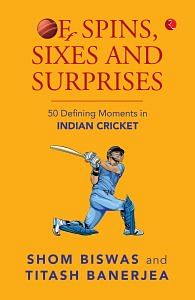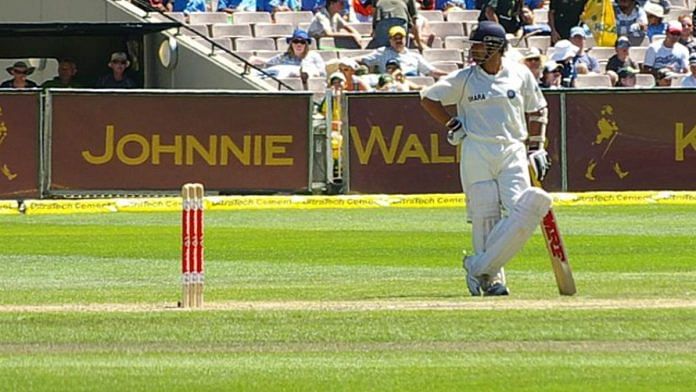To an earlier generation of Indian cricket followers, nothing will surpass the despair felt when Javed Miandad hit 6 off the final ball by Chetan Sharma that day in April 1986. To a different generation of Indian cricket followers, the nadir was reached 11 years later, on 31 March 1997, at Kensington Oval, Bridgetown, Barbados.
India was coming off a chastizing 2-0 defeat at the hands of the South Africans, having been routed by the rivals’ quick bowling attack led by the fearsome Allan Donald in its 1996–97 tour to South Africa. India’s over-dependence on Tendulkar to be the saviour in overseas conditions was reduced with the arrival of Dravid and Ganguly in 1996, but they were both still finding their feet as international players. Laxman debuted in the latter part of 1996, and was even more raw. However, two stalwarts of the previous decade, Azharuddin and Sidhu, were still there in the team.
The West Indies was a far cry from the world-beaters of the ’70s and the ’80s. The legendary fast-bowling partnership of Curtly Ambrose and Courtney Walsh was past its prime but still formidable. Ian Bishop had returned to cricket after a long layoff necessitated by an injury. Among the batters, there was the peerless Brian Lara, and the talented but inconsistent Carl Hooper. Shivnarine Chanderpaul, the quirky master of the patient game, had made his appearance a few seasons back. Altogether though, this West Indies side had many who were a few notches below their brilliant predecessors.
Also read: Maharashtra’s 1st female police chief was called Jhansi ki Rani. She exposed a corrupt DIG
The Indian bowling had been severely impacted by the loss of the spearhead Srinath. Venkatesh Prasad, a fine bowler but without the pace of Srinath, was burdened with shouldering the pace-bowling attack. Abey Kuruvilla and Dodda Ganesh were brought in to support Prasad. The leg-spin of Kumble and the left-arm orthodox of Sunil Joshi would complement them.
This was to be a five-Test and four ODI series. It was widely considered that this was a good chance for India to win another series in the Caribbean after the class of 1971. The fiery tracks of Kensington Oval, Bourda and Sabina Park were, however, a thing of the past. The newly-laid tracks often played slow and low, making both quick run-making and wicket-taking difficult. Attritional cricket was often the order of the day.
The first Test at the Sabina Park was a staid draw. Some scintillating stroke-play from Lara and Hooper, and a spirited marathon bowling performance from Kumble were the take-homes from this match.
The second Test at Queen’s Park Oval, Trinidad, followed much of the same pattern. If anything, it was even more of a snooze fest. Sidhu, famous for his towering sixes against Shane Warne back home, scored a laborious 201 off nearly 500 deliveries. The West Indies blocked their way through both their innings. A result was out of the question.
West Indies vs India, 3rd Test, Kensington Oval, Bridgetown, Barbados, 27–31 March 1997
As we reflect on Tendulkar’s career, it’s important to remember how his legacy continues to inspire future generations of cricketers. The impact of his journey is evident in the way players like Kohli have emerged, carrying forward the torch of excellence in cricket. Kohli’s recent achievements, including his 50th century, highlight the ongoing influence of Tendulkar’s remarkable career. For more on this, check out 10 yrs without jersey no. 10: Kohli’s bow & Wankhede’s joy show Sachin’s aura hasn’t dimmed a bit.
This was the background in which the third Test was played at Kensington Oval. It was a testing track, with considerable grass and the expectation of uneven bounce as the game progressed. The West Indies had a major misfortune on the eve of the match, when captain Walsh complained of a hamstring injury and could not play. Bishop was brought in to replace him. Since the Kensington Oval track was quite green, India chose to field three quickies and replaced Joshi with his state mate, Ganesh.
Lara captained the West Indies for the first time in his career, standing in for Walsh. Indian captain Tendulkar won the toss and elected to send the Caribbeans in first. On the green, bouncy track, Prasad provided one of his best displays in Test cricket, and troubled all batters—all, except Chanderpaul, who batted throughout the innings, having come in at the fall of Sherwin Campbell’s wicket. He remained not out for 137, and the West Indies were all out for 298.
India struggled against the four-pronged West Indies attack as well, and except for a patient 170-run third-wicket partnership between Dravid and Tendulkar, there was no other substantial partnership in the innings. Sidhu, Ganguly and Azharuddin got starts but could not convert them into substantial scores. There was some contribution by Kumble in the lower-order, and India ended up with a meagre 21-run lead at the mid-point of the match.
The West Indies’ second innings was all about the Indian quick bowlers. Kuruvilla was a tall, fast-medium bowler, who had had a stellar first-class career as the spearhead of the Mumbai bowling attack in the ’90s. This was his great moment—playing for India. He got a 5-wicket haul. Ganesh, another stalwart of the Indian domestic game, also performed creditably, and Prasad carried his form from the first innings. The West Indies was all out for 140, almost right at the end of the third day, and India went on to bat on the fourth day with victory only 120 runs away.
What followed, on the fourth day of play, on 31 March 1997, was perhaps the most difficult moment for many Indian cricket fans. Early in the innings, Sidhu was caught in the slips, fending at a lifting delivery from Franklyn Rose. There was agony for the player and the Indian fans when replays showed that Rose had overstepped and it was a no-ball—a call missed by umpire Lloyd Barker. Rose, who was from Jamaica, had a flowing chest-on bowling action, excellent pace and exuberant celebration but often lacked control. This morning, he was right on the money. Bowling from wide of the crease, he got one to straighten to Dravid, and the Indian edged a catch to the wicketkeeper. India was two down for 16. Next, a slightly short-of-good-length ball from Rose kept low and knocked back Laxman’s off stump. Three down for India.
Also read: ‘Commonwealth, cricket, curry’—India & Australia should’ve been close friends. They aren’t
Ian Bishop came back now to bowl a lovely out-swinger to Tendulkar. The Little Master edged, and Lara plucked up a fine catch at first slip. India was wobbling now at 4 down for 32. Then came a tentative partnership between former captain Azharuddin and Ganguly. They edged and missed and continued to push the score forward.
Ambrose came back into the attack, and tested Ganguly thoroughly for an over of sustained hostility, eventually castling him. The West Indies could see the end now: an unlikely victory. India was still 75 runs short, and had lost half its team. Ambrose then got through Azhar’s defence with a ball that kept low.
The rest of the innings was a procession. Bishop and Ambrose wiped out the tail, and India was all out for 81. The team batted for only 35.5 overs. India had failed to chase the 120-run winning target. The West Indies had won by 38 runs. The rest of the series was largely washed out by torrential rain. The West Indies won 1-0. Tendulkar was gravely disturbed by this failure, and mentioned in an interview37 much later that he had considered retiring from cricket after this failure. Thankfully, he didn’t. He, however, relinquished the captaincy after a few more failures, and that marked the start of the next chapter of Indian cricket.
 This excerpt from Shom Biswas and Titash Banerjea’s ‘Of Spins, Sixes and Surprises’ has been published with permission from Rupa publications.
This excerpt from Shom Biswas and Titash Banerjea’s ‘Of Spins, Sixes and Surprises’ has been published with permission from Rupa publications.






